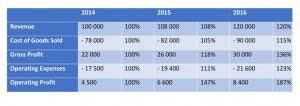
Employees who enter data manually are prone to making mistakes, including typos, flipping numbers or letters, and misinterpreting data. On the other hand, AI systems are programmed to extract and interpret information from invoices accurately, leading to higher precision and fewer errors in financial records. This saves you the headache and financial burden of rectifying these errors, freeing your time and money for more important things. Enjoy comprehensive automation that minimizes manual intervention at every step of the invoice lifecycle. This leads to quicker processing times, reduced human errors, and an overall increase in operational efficiency, enabling your team to allocate their time to high-value tasks. AI-driven systems have a much lower risk of errors compared to manual processes, reducing costly mistakes such as duplicate payments, incorrect entries, or missed invoices.

Accuracy and Error Reduction

AI and ML algorithms can analyse large volumes of data and learn patterns to accurately classify documents based on their content, format, and other characteristics. The real value of AI is realised when it can recognise trends and learn from patterns. Accounting automation can manage the small tasks, performed multiple times, for various invoices and receipts. By using advanced algorithms, AI can spot unusual patterns and flag potential issues with remarkable accuracy. While the benefits of AI in invoice processing are clear, adopting this technology requires careful planning and execution.
Finance Team

Multilanguage capabilities of AI-powered systems ensure that global organizations can process invoices in different languages and formats. It accommodates the differences in various regional tax codes, currency symbols, and date formats; hence, no hiccups in processing invoices across regions and in line with local country regulations. AI systems can interpret and ascribe the right general ledger (GL) codes to every line https://www.bookstime.com/articles/what-is-a-performance-budget item in an invoice based on business rules and historical data.
- As a result, organizations can enhance liquidity, reduce financial risks, and ensure their capital is directed toward investments and opportunities that yield the best returns.
- Microsoft’s Power Platform offers AI builders – essentially, low-code tools for creating custom document processing solutions.
- This streamlines the entire process and helps these interconnected processes achieve higher productivity while working together.
- AI can also flag discrepancies, ensuring that issues are caught early and preventing payment errors.
Grown your business with Envoice
Mistakes such as entering incorrect invoice amounts, vendor details, or dates can result in delayed payments, disputes, or financial misreporting. Yes, AI can detect potential fraud attempts, such as duplicate invoices or unusual amounts. AI algorithms can identify anomalies and discrepancies in invoice data, which are flagged for review, preventing errors and fraudulent activities from slipping through the cracks. Machine learning (ML) enhances OCR accuracy through training on test data and continuous improvement with subsequent data. ML algorithms also enable AI to learn from past data, adapt to different invoice formats, and improve accuracy over time.

It also supports multi-level approval workflows and customized rules, so you can automate repetitive tasks and let your team focus more on tasks that encourage business growth. AI invoice processing uses advanced technologies like machine learning (ML), natural language processing (NLP), and optical character recognition (OCR) to process invoices digitally. It automates key steps like invoice capture, data extraction, and data validation and then sends them to appropriate channels for approval and payment.
- Automation eliminates the need for extensive manual intervention, allowing you to allocate your resources more efficiently.
- With IDP solutions, you can identify, categorize, and download complicated line items on invoices, even when they span multiple pages or have complex structures.
- With features like automatic routing and exception handling, AI ensures that invoices reach the appropriate stakeholders instantly.
- Smart contracts automate certain parts of the payment workflow, and blockchain provides a secure, tamper-proof ledger of financial transactions.
- This reduces the need for manual intervention and improves overall workflow efficiency.
From Alexa and Siri to text messaging suggestions and bots, Online Accounting artificial intelligence is making its presence known in business and day-to-day lives — making everything smarter, better, and quicker. E-invoicing compliance is becoming mandatory across Germany, Poland, Belgium, Spain, and Malaysia, with governments tightening tax regulations. Businesses must transition to structured invoicing formats like ZUGFeRD, XRechnung, KSeF, PEPPOL, and LHDN… Equip yourself with the right knowledge to make the best decision for your business.
- This prevents errors such as duplicate invoices, incorrect amounts, or unauthorized transactions, ensuring that businesses maintain clean and accurate financial records.
- The system will go on to flag any potentially fraudulent activities, and send notifications accordingly.
- Automated invoice data capture is performed with OCR that’s enhanced with machine learning technology for experience-improved accuracy.
- Cognitive data capture is a self-learning technology that becomes increasingly accurate with the number of documents it processes.
- This article explores how AI transforms invoice processing with automation, reducing errors and saving time.
Integration with Legacy Systems:
By harnessing AI, businesses can achieve faster, more efficient invoice processing. One of the earliest hires on most accounting teams is an AP manager, typically an accountant who uses the software for automating invoice processing. Managers and executives can also use AP automation software to monitor AP processing activities. AP automation improves the efficiency and accuracy of the AP department and helps with other accounting activities, such as ai invoice processing financial closing. Unfortunately, traditional AP processes can be slow, error-prone, and labor-intensive.
Forrester Unveils What Top AP Teams Are Doing Differently with AI
- The information that can be extracted ranges from invoice numbers, vendor names, dates, contact information, payment terms, sales tax, and amounts with high accuracy.
- It’s often said that AI will elevate the accounting profession by freeing up more time to focus on value-added activities that are more rewarding.
- Before implementing AI invoice automation, identify the specific goals you want to achieve.
- Traditional invoice processing requires manual data entry, verification, and approval, which can be time-consuming, especially for businesses handling a high volume of invoices.
AI improves its accuracy over time by learning from past corrections, significantly reducing errors. These tools also categorize and organize invoices automatically, eliminating the need for manual sorting. It captures details like line items from invoices, spots anomalies, and flags duplicate invoices for review. Your business also gains better metrics to monitor your cash flow and prevent late payments, ultimately improving your supplier relationships.
